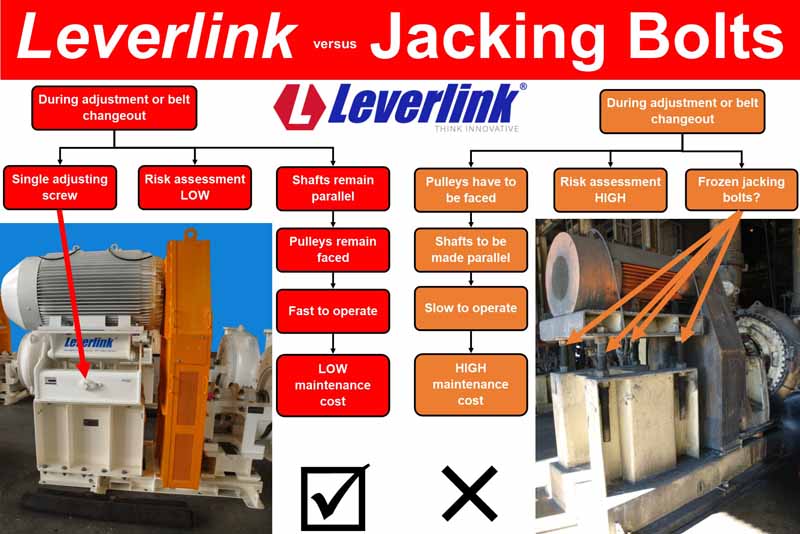Jacking Bolts
Almost 30 years ago, when we started looking at problems adjusting vee belts on overhead drive slurry pumps, it became apparent that there was a series of issues. As a result, these issues created difficulty in fitting and adjusting vee belts, maintaining drive and driven shaft parallelism, and facing the pulleys.
Safety Risk Assessments
Above all, many of our earlier installations were based on risk assessment and injuries that had occurred when fitting or changing vee belts. These can be attributed to some of the following:
- Jacking bolts being above shoulder level
- Slips and trips
- Adjusting tools slipping off large nuts
- Having to use extension bars
- Working at heights
- Corrosion causing nut seizures
Mechanical Challenges
1. Facing pulleys and having pump and motor shaft parallel (this has to be done each time the belts are tensioned or changed out)
2. Maintaining the correct vee belt tension (item 1 has to be done at each adjustment)
3. It is not uncommon for the above task to take up to 8 hours



